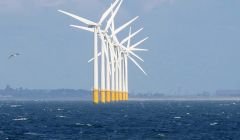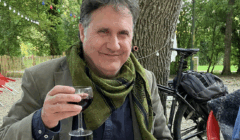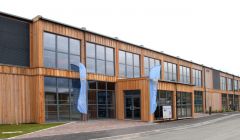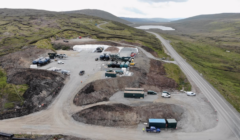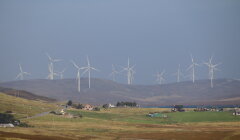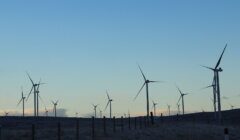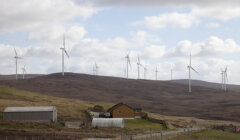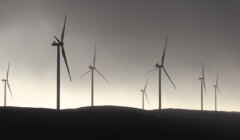Opinions / Adding insult to injury
I suppose it really should come as no surprise to learn that Viking Energy, as well as submitting a revised application to Shetland Islands Council for its “upgrade” of the B9075 road from Sandwater to Kergord, has also submitted three planning advance notices (PANs) for what it euphemistically calls “camps” – construction compounds. (Plans lodged for Viking compounds; SN, 26/03/2019).
Though these are deemed to be of a temporary nature, their size is extraordinary (the “Main Camp” at Sandwater: 250 x 250 m or 6.25 ha; and the “West Camp” at the Scord of Tresta: 200 x 200 m or 4 ha – there is apparently no documentation available for the third, the “North Camp”, at the time of writing).
What is galling above all is the way this appears to be done. The original planning application for the wind farm having been approved, it seems that VE can with impunity submit variations and revisions, in the almost certain knowledge that they will be approved – because of that original consent being granted, and with the excuse that such changes are necessary for the development to proceed. (One should also bear in mind that the planning department must be overloaded with wind farm related applications and conditions it is required to enforce.)
As for the B9075, it is now intended to construct an entirely new two lane (nine metres wide including verges) track and to use sections of “floating road” on areas of deep peat, so that the volume of peat to be excavated is substantially reduced, from about 170,000 to 31,000 cu. m. (thus minimising or removing the problem of disposal).
The Non-technical Summary states: “Upon completion of the wind farm construction, the track would be brought up to adoptable public road standards, and public traffic would move onto the newly realigned road.”
Become a member of Shetland News
While discussions have taken place with SIC Roads about “the design of the road alignment and junctions”, it is not clear if the floating road proposal has met with approval.
Given the weight and frequency of all the wind farm (and converter station) construction traffic, it is likely, as has happened elsewhere, that the floating road sections would subside or sink, disrupting hydrology, and requiring extra infill to stay “afloat”! I suspect a competent roads engineer would have misgivings about this proposal.
Then I find it odd, to say the least, that the dwelling at Sandwater (aka “the Halfway House”), although occupied, is excluded from VE’s EIA assessment of cultural heritage, which apparently only considers archaeological remains. The unique location, architecture and history of the Halfway House surely merit its inclusion.
Meanwhile, the operational impact of the wind farm on the house and its occupant, with at least three turbines within 1 km, and five within 2 km, two nearby quarries, the construction of the new road itself, its use during and after construction, and to crown it all the 6.25 ha “camp site” practically outside the front windows – well, I am at a loss for words as to how the developers can be so brutal, apart from saying they can have no shame.
To use a photograph of the house in its present relatively unspoilt environment as the cover for the Non-technical summary just adds insult to injury.
James Mackenzie
The Lea
Tresta
Become a member of Shetland News
Shetland News is asking its readers to consider paying for membership to get additional perks:
- Removal of third-party ads;
- Bookmark posts to read later;
- Exclusive curated weekly newsletter;
- Hide membership messages;
- Comments open for discussion.
If you appreciate what we do and feel strongly about impartial local journalism, then please become a member of Shetland News by either making a single payment, or setting up a monthly, quarterly or yearly subscription.

































